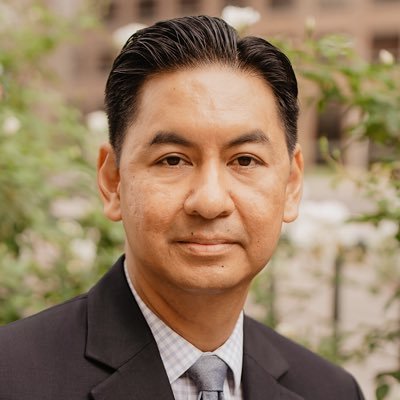Right now, California’s school districts are rightly focused on a safe start to an unprecedented school year. But, once classes settle, they would be wise to revisit their Covid recovery strategies and consider adjusting their plans.
My advice may seem premature. After all, districts adopted their budgets just a couple of months ago, codifying ambitious ideas to address immense student needs after a prolonged period of distance learning. But it’s not hard to predict that a shortage of certain key workers will require school system leaders to search for alternative solutions or risk allowing students to fall further behind.

An examination of school district plans shows why this is the case. With roughly $190 billion in Elementary and Secondary School Emergency Relief funds nationwide, many districts looked to hire greater numbers of education professionals who could provide direct services to students. The Los Angeles Unified School District, for example, sought to add 2,190 teachers and 930 psychologists and psychiatric social workers — increases of about 8% and 80%, respectively.
Other school systems had the same idea. An analysis of emergency relief fund spending in 100 large urban districts found that more than half of their investments were intended to help students “make up for lost instructional time,” according to the Center on Reinventing Public Education.
Over 40% of their investments were designed to help students cope with trauma and other mental health issues. Translation: Enlist additional employees for individualized and intensive services that can counteract the effects of the pandemic.
These strategies made sense. Unfortunately, districts have struggled to meet their hiring goals and staff their programs at full capacity. Just a few weeks before the first day of school, Los Angeles Unified reported that, of the 4,389 full-time positions it had hoped to fill, about 54% were still vacant. Similar vacancies were seen elsewhere in the state and around the country, prompting the Washington Post to write: “Welcome back to school, where counselors, substitute teachers and ketchup packets are in short supply.”
Some of these positions will be filled as the school year progresses. But districts will be hard-pressed to fully achieve their objectives because they can’t find enough people for open jobs.
As the Learning Policy Institute pointed out, even before the arrival of Covid relief funds, school systems were already relying on teachers with substandard credentials and permits — a sign of a labor shortage. This problem was acute in the very areas that Covid recovery plans often prioritized, including math, science, special education and English language development, particularly in high-need schools. Independent study will give districts yet another mandatory program to fulfill.
More broadly, there are systemic pressure points that make it difficult to attract and retain teachers. Testing requirements and inadequate financial aid discourage potential educators from entering the field, while increased workloads and burnout push current professionals to retire early or switch careers. On the flip side, rising pension costs prevent districts from making long-term commitments to an expanded workforce, especially since the emergency Covid-relief funds only last a few years.
Bottom line: School systems will have a hard time executing their plans as presently designed. In light of pressing student needs, they should take immediate steps to modify their strategies.
Such modifications could involve greater use of partnerships with service providers from different sectors. For instance, districts could engage tutoring companies to help operate academic interventions, government agencies to coordinate youth services, and higher education institutions to identify college students for mentor programs.
Community-based organizations could also serve as collaborators. In a recent Afterschool Alliance survey, only 45% indicated that they had been approached by local education leaders to discuss federal Covid relief funds. Districts could easily correct this oversight, as many community-based organizations already run expanded learning programs on school campuses.
Partnerships represent just one of many ideas to supplement staff hires. Their feasibility will depend on local context, and districts will have to create their own unique portfolios of student services that respond to community needs. The point is less about specific programs than about the process. Now is the time to start developing Plan B.
Why the urgency? Realistically, it will take months for school systems to generate different options; consult their boards of education, unions and other stakeholders; and build consensus for their new revised plans. School-opening challenges will only complicate what is, even under the best circumstances, a daunting process.
Above all, it is important to act with urgency because students need the support. Additional delays will only set them back further.
Robert Tagorda is the founder and CEO of Revival Strategy Consulting, which advises educational organizations on strategy and program design. Between 2013 and 2021, he served as executive director of equity, access and college and career readiness at the Long Beach Unified School District.
